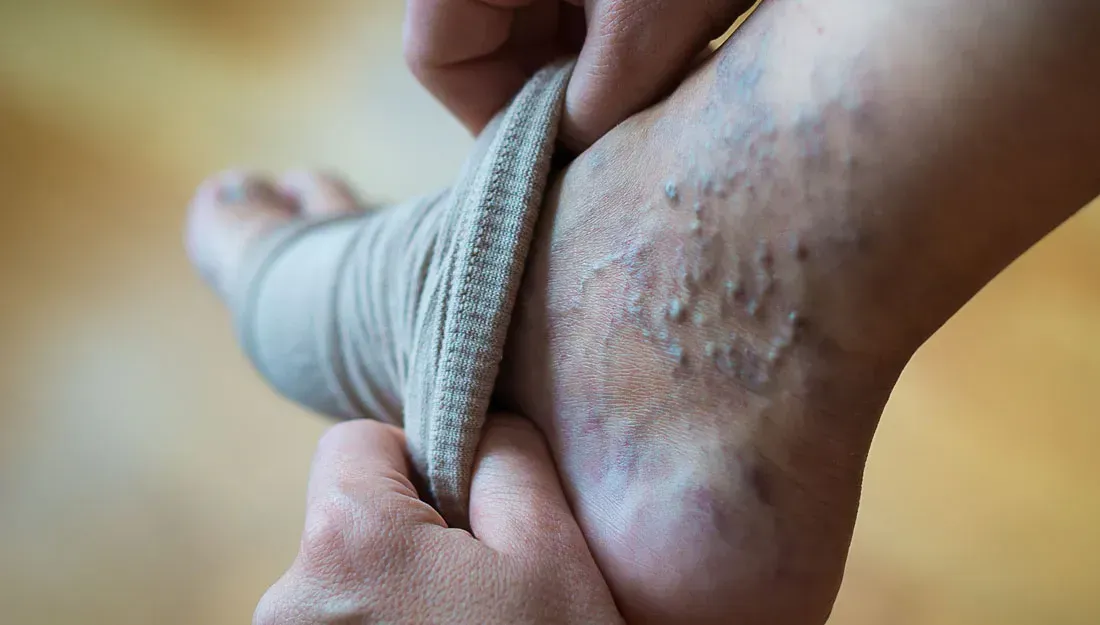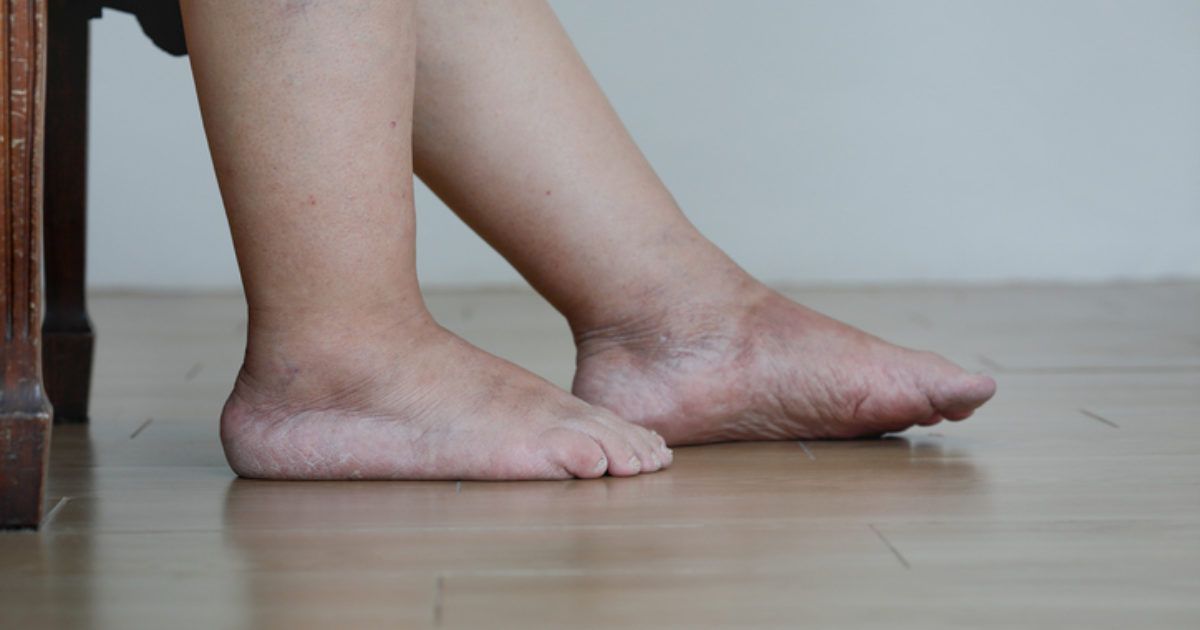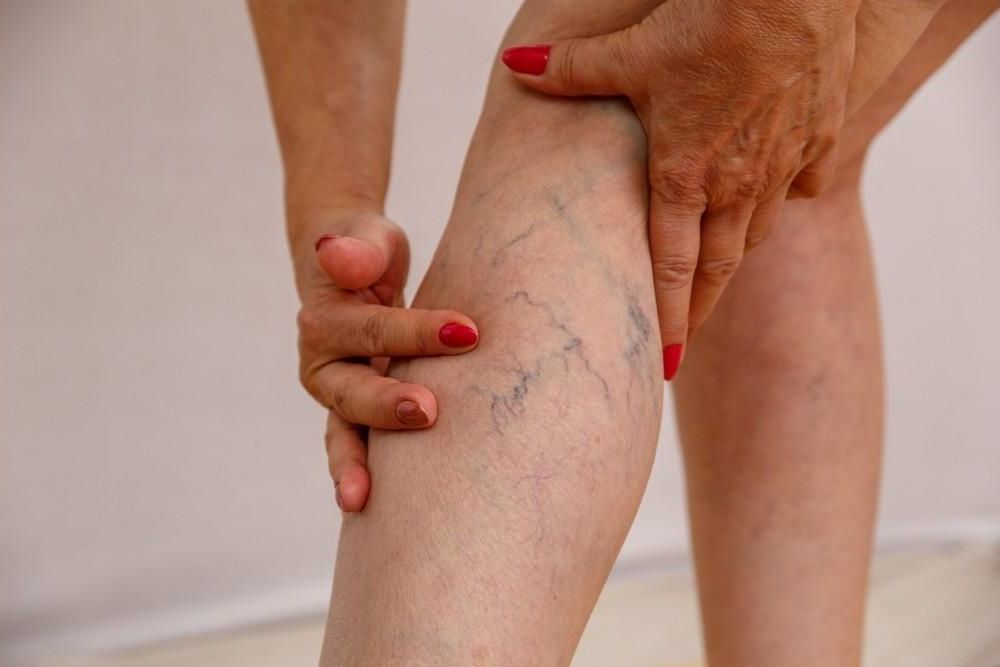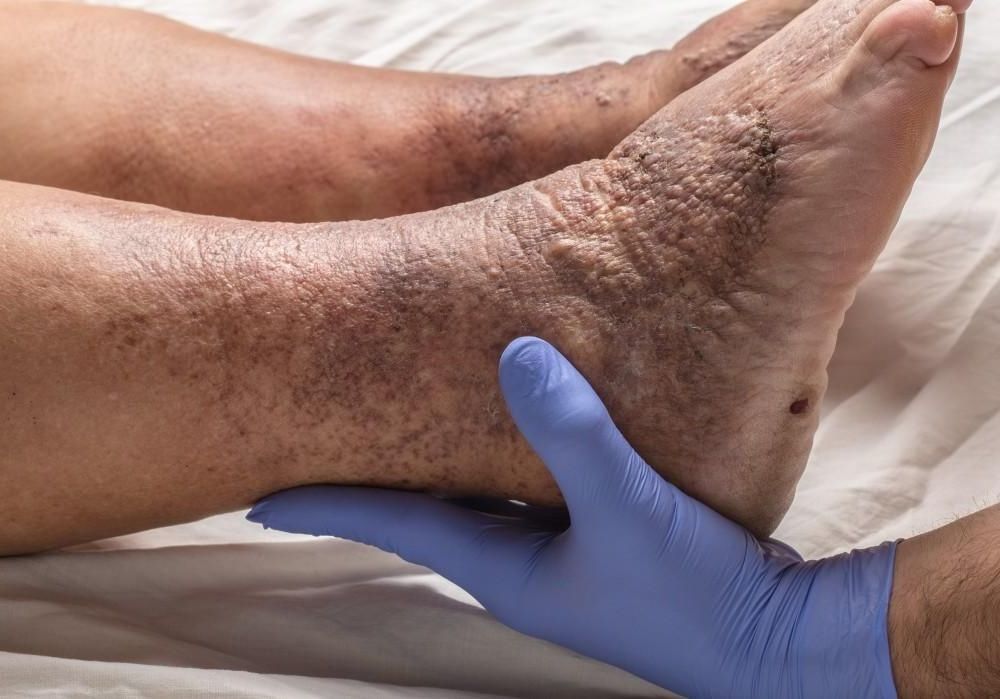
ANKLE DISCOLORATION
ANKLE DISCOLORATION: MORE THAN SKIN DEEP
While ankle discoloration can have many causes – from simple bruising to skin infections – persistent color changes may signal an underlying vein condition called venous stasis dermatitis. As The Leg Vein Experts, we understand how critical it is to identify the true source of these skin changes. At Vascular Solutions in Charlotte, our board-certified specialists, led by Dr. Peter Ford, MD, FACS, RPVI, provide thorough evaluations to determine if your ankle discoloration stems from vein problems and create customized treatment plans that address the root cause, not just the symptoms.

UNDERSTANDING ANKLE DISCOLORATION
QUESTIONS & ANSWERS
WHAT CAUSES VENOUS STASIS DERMATITIS?
Think of your leg veins as a complex pumping system. When the one-way valves in your veins weaken, blood flows backward (reflux) instead of returning to your heart. This creates increased pressure in your lower legs, leading to a condition called venous stasis dermatitis.
Expert Insight: While ankle discoloration can have many causes, vein-related skin changes often signal underlying circulation issues that require medical attention.
HOW DOES VENOUS STASIS DERMATITIS CAUSE ANKLE DISCOLORATION?
When pressure builds in your leg veins, it triggers a chain reaction:
- Fluid and proteins leak into surrounding tissues
- Leg swelling develops
- Inflammation occurs
- Skin becomes dry, itchy, and irritated
- A distinctive reddish-brown discoloration appears
Expert Insight: The skin changes often begin subtly but can darken and spread over time. Early treatment of underlying vein problems can prevent progression.
UNDERSTANDING VENOUS ULCERS
Untreated venous stasis can lead to more serious complications:
- Difficulty with skin healing
- Development of shallow wounds (venous ulcers)
- Increased risk of infection
- Challenging recovery times
Expert Insight: About half of venous ulcers remain unhealed for nine months or longer, making early intervention crucial.
HOW DO VEIN SPECIALISTS TREAT ANKLE DISCOLORATION?
At Vascular Solutions, we develop customized treatment plans focused on:
- Addressing underlying vein conditions
- Preventing progression of skin changes
- Reducing risk of complications
Our Comprehensive Approach:
- Advanced Diagnostic Imaging
- Customized Treatment Planning
- Progressive Care Options
- Treatment Solutions Include:
- Venclose® thermal therapy
- VenaSeal™ adhesive treatment
- Varithena® foam procedure
- Specialized phlebectomy
- Targeted sclerotherapy
- Compression therapy
- Strategic leg elevation
Expert Insight: The key to successful treatment is addressing the root cause - the underlying vein condition - not just the visible skin changes.
HOW ARE ANKLE DISCOLORATION AND VENOUS STASIS ASSOCIATED WITH LEG WOUNDS (VENOUS ULCERS)?
The problems that cause venous stasis dermatitis also increase the likelihood of developing a leg wound. Excess fluid and leg swelling make it difficult for the skin to heal and repair. The medical name for a leg wound that develops secondary to vein problems is a venous ulcer (sometimes referred to as a “venous stasis ulcer”). Venous ulcers usually first appear as a shallow wound and are typically located just above the ankle bone.
Venous ulcers are potentially serious because they can be difficult to heal. About half of all venous ulcers remain unhealed for nine months or longer. The longer a venous ulcer goes without healing, the more likely you are to develop a skin or bone infection.

TAKE ACTION TODAY
Don't wait until ankle discoloration progresses to more serious problems. Schedule your consultation with Charlotte's trusted leg vein experts to discover the best treatment path for you.


















